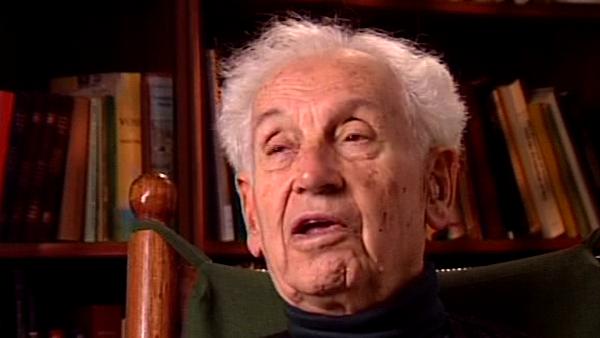NEXT STORY

My effort to complete my doctorate
RELATED STORIES

NEXT STORY

My effort to complete my doctorate
RELATED STORIES


|
Views | Duration | |
|---|---|---|---|
| 1. Early life and education | 2 | 3084 | 02:20 |
| 2. Bird watching: an exciting observation | 1 | 1284 | 02:21 |
| 3. My effort to complete my doctorate | 787 | 03:46 | |
| 4. The importance of being a true naturalist | 853 | 02:11 | |
| 5. Working at the Museum with Stresemann and Rensch | 491 | 01:14 | |
| 6. Rensch's influence. Working in the library and department of... | 484 | 01:23 | |
| 7. My first expedition: New Guinea | 1 | 523 | 04:34 |
| 8. The natives | 432 | 01:07 | |
| 9. Searching for the birds of paradise | 438 | 03:00 | |
| 10. From Dutch New Guinea to the Mandated Territory of New Guinea | 371 | 04:39 |

I had been a very ardent bird-watcher in those days. Every day I was out watching birds and I made all sorts of locally interesting observations. I'd bicycle to nearby lakes, to the streams of... of the Elba and other rivers, to the mountains nearby, watching birds almost every day. Well, after my final examination at the high school, the [Humanistisches] Gymnasium as it was call in Germany, my mother gave me a pair of field glasses and one day I bicycled out to some lakes near Dresden and as I looked across a wall at the ducks on this lake I suddenly saw a pair of ducks the like I had never seen before. The male had a red bill. Well, no German duck had a red bill, I knew that, and I made a very detailed description of this bird – it was a male and a female – in my daily ornithological diary, and then I dashed back on my bicycle to Dresden to get somebody else to confirm my observation because I was quite sure nobody would believe me if somebody else wouldn't see it. But it was unfortunately a weekday and I, of course, not going to school any more could travel on weekdays, but everybody else who knew anything about birds had a job and this person said, 'No, I can't go out there until next Sunday'. Well, by next Sunday, of course, the birds were gone. Well, I finally found out from the books that this bird was the Red-crested Pochard, and so far as I could determine it was... this was 1923, and so far as I could determine, this was the first observation in central Europe since the year 1846. So, the next week I went to the ornithological society of Dresden. Of course nobody believed me because people had gone out the past Sunday and hadn't been able to find it, and I was very much distressed. But by pure chance there was a paediatrician at this meeting who said, 'Oh, I studied with a fellow who is now Germany's leading ornithologist. His name is [Erwin] Stresemann, he is in Berlin. Why don't you get in touch with him? Maybe he will believe you'.
The late German-American biologist Ernst Mayr (1904-2005) was a leading light in the field of evolutionary biology, gaining a PhD at the age of 21. He was also a tropical explorer and ornithologist who undertook an expedition to New Guinea and collected several thousand bird skins. In 1931 he accepted a curatorial position at the American Museum of Natural History. During his time at the museum, aged 37, he published his seminal work 'Systematics and Origin of the Species' which integrated the theories of Darwin and Mendel and is considered one of his greatest works.
Title: Bird watching: an exciting observation
Listeners: Walter J. Bock
Walter J. Bock is Professor of Evolutionary Biology at Columbia University. He received his B.Sc. from Cornell and his M.A. and Ph.D. from Harvard. His research lies in the areas of organismal and evolutionary biology, with a special emphasis on functional and evolutionary morphology of the skeleto-muscular system, specifically the feeding apparatus of birds.
Tags: Elba River, Germany, Dresden, Red Crested Pochard, 1923, Central Europe, 1846, Ornithological Society of Dresden, Berlin, Erwin Stresemann
Duration: 2 minutes, 21 seconds
Date story recorded: October 1997
Date story went live: 24 January 2008